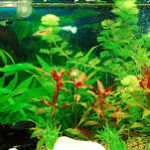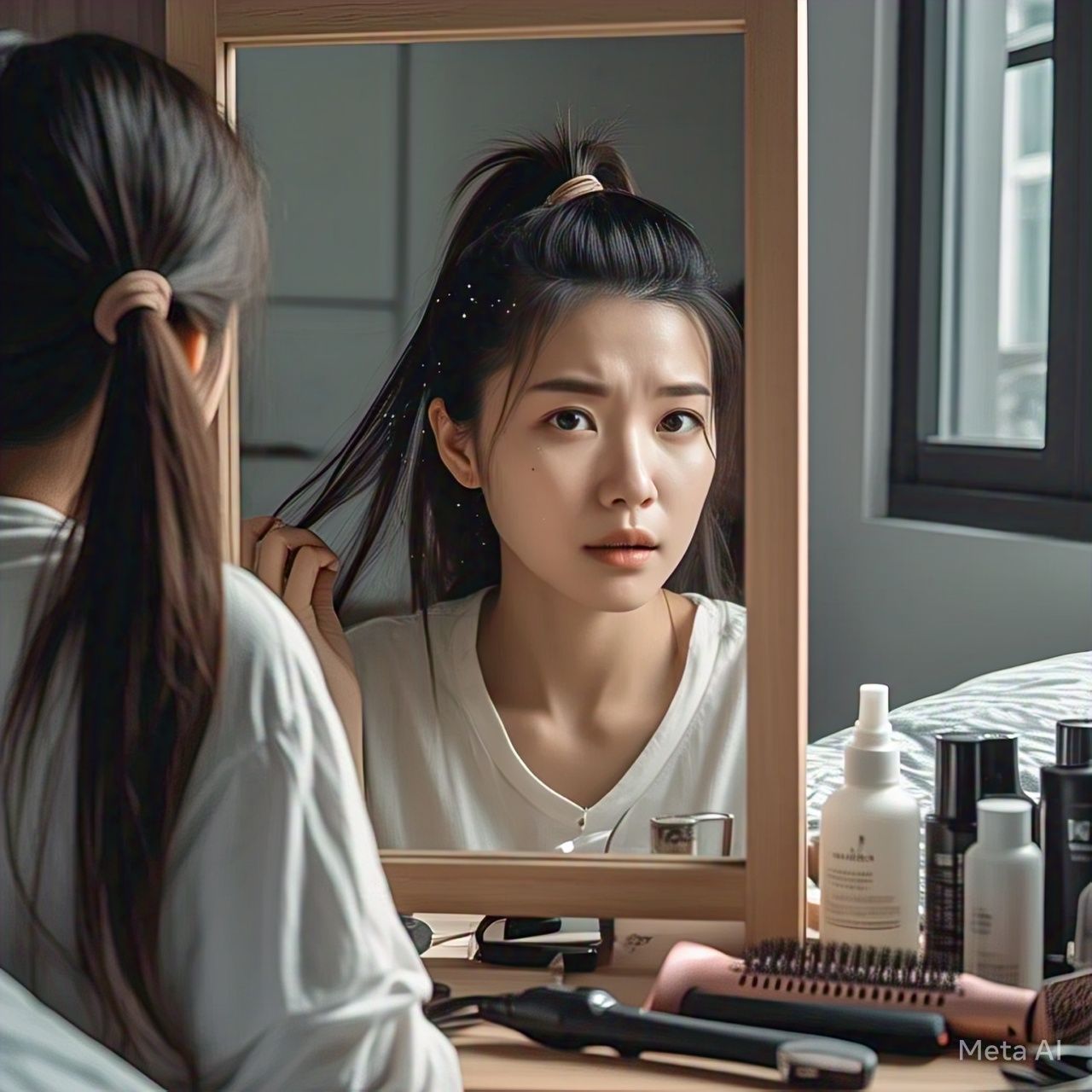The First Mistake – Overwashing and Harsh Shampoos
Long, silky Asian hair is admired for its strength and beauty, but maintaining it requires proper care. Many people unknowingly make mistakes that damage their hair, leading to breakage, dryness, and loss of shine. This article explores five common hair care errors and provides solutions to restore and protect long Asian hair.
The Problem with Overwashing and Harsh Shampoos
One of the biggest mistakes people make is washing their hair too frequently or using shampoos with harsh chemicals. Asian hair tends to be thicker and straighter, but it can also be prone to dryness. Overwashing strips the scalp of its natural oils, leaving hair brittle and lifeless. Many commercial shampoos contain sulfates, parabens, and alcohol, which further dehydrate the hair.
How Overwashing Damages Hair
The scalp produces sebum, a natural oil that keeps hair moisturized. Washing hair daily removes this protective layer, forcing the scalp to overcompensate by producing more oil, which can lead to greasy roots and dry ends. Additionally, frequent washing weakens the hair shaft, making it more susceptible to split ends and breakage.
Choosing the Right Shampoo
Not all shampoos are created equal. For long Asian hair, sulfate-free and moisturizing shampoos are the best choice. Ingredients like argan oil, coconut oil, and hyaluronic acid help retain moisture without weighing hair down. Look for products labeled “hydrating” or “repairing” to maintain hair health.
How Often Should You Wash Your Hair?
The ideal washing frequency depends on hair type and lifestyle. For most people with long Asian hair, washing two to three times a week is sufficient. On non-wash days, dry shampoo can help absorb excess oil without stripping moisture. Those with very oily scalps may need to wash more often but should always follow up with a nourishing conditioner.
The Right Washing Technique
Even with the best shampoo, improper washing can cause damage. Instead of piling hair on top of the head, which creates tangles, gently massage shampoo into the scalp in downward motions. Lukewarm water is best, as hot water opens the hair cuticles too much, leading to moisture loss. Always finish with a cool rinse to seal the cuticles and enhance shine.
Overwashing and harsh shampoos are silent killers of long Asian hair. By switching to gentler products and adjusting washing frequency, hair can regain its natural strength and shine. The next part will discuss another common mistake: neglecting proper conditioning.
The Second Mistake – Skipping Deep Conditioning Treatments
Long Asian hair requires more than just regular shampooing to stay healthy. Many people skip deep conditioning, thinking that a quick rinse-out conditioner is enough. However, without proper hydration, hair becomes dry, frizzy, and prone to damage.
Why Deep Conditioning is Essential
The structure of Asian hair makes it thicker and more resistant to moisture absorption. While this can be an advantage, it also means that surface-level conditioning is often insufficient. Deep conditioners penetrate the hair shaft, providing long-lasting hydration and repairing damage from heat styling, pollution, and chemical treatments.
Signs Your Hair Needs Deep Conditioning
If hair feels rough, looks dull, or tangles easily, it’s a sign that moisture is lacking. Split ends and excessive breakage also indicate that the hair’s natural proteins and lipids are depleted. Deep conditioning treatments restore elasticity, smoothness, and manageability.
How to Choose the Right Deep Conditioner
Not all deep conditioners work the same way. For Asian hair, products containing shea butter, keratin, and ceramides are highly effective. Protein-based treatments can strengthen hair, but overuse may cause brittleness, so they should be used once a week at most. Moisturizing masks with natural oils are safer for frequent use.
The Best Way to Apply Deep Conditioner
For maximum absorption, apply conditioner to damp hair after shampooing. Focus on the mid-lengths and ends, where damage is most severe. Covering hair with a warm towel or using a steamer opens the cuticles, allowing deeper penetration. Leaving the treatment on for at least 15-20 minutes ensures optimal results.
DIY Deep Conditioning Remedies
For those who prefer natural solutions, homemade masks can be just as effective. A mixture of coconut oil and honey provides intense moisture, while avocado and yogurt offer protein and shine. These treatments should be used once a week for best results.
Deep conditioning is not a luxury but a necessity for maintaining long Asian hair. By incorporating regular treatments, hair becomes softer, stronger, and more resilient. The next part will explore the dangers of excessive heat styling.
The Third Mistake – Excessive Heat Styling and Lack of Protection
Long Asian hair is often admired for its sleek, straight texture, but many people rely too heavily on heat styling tools to maintain this look. Blow dryers, flat irons, and curling wands can cause severe damage over time, leading to dryness, split ends, and breakage. Understanding the risks and learning how to protect hair from heat is crucial for maintaining healthy, long locks.
How Heat Damages Hair
Hair is made up of keratin, a protein that relies on moisture to stay strong and flexible. When exposed to high temperatures, the water inside the hair shaft evaporates, leaving strands brittle and prone to snapping. Repeated heat styling also weakens the hair’s cuticle, the outer protective layer, causing frizz and dullness. Asian hair, while naturally resilient, is not immune to this damage—especially when subjected to daily heat.
Common Heat Styling Mistakes
One of the biggest mistakes is using heat tools on soaking-wet hair. Wet hair is more vulnerable because the water inside heats up rapidly, leading to steam bubbles that weaken the hair’s structure. Another mistake is cranking up the temperature too high. Many flat irons go up to 450°F (232°C), but hair only needs about 300-350°F (149-177°C) to straighten effectively. Higher temperatures cause unnecessary damage.
Choosing the Right Heat Tools
Not all styling tools are created equal. Ceramic and tourmaline flat irons distribute heat more evenly than metal plates, reducing hot spots that can singe hair. Ionic blow dryers help minimize frizz by emitting negative ions that seal the hair cuticle. Investing in high-quality tools with adjustable temperature settings can make a significant difference in preventing heat damage.
Heat Protectants: A Must-Have for Styling
Before using any heat tool, applying a heat protectant is essential. These products create a barrier between the hair and heat, reducing moisture loss and preventing protein damage. Look for serums or sprays containing silicones, panthenol, or natural oils like argan oil. For best results, apply evenly from mid-lengths to ends, avoiding the scalp to prevent greasiness.
Alternative Styling Methods
Reducing heat exposure doesn’t mean giving up styled hair. Air-drying with a microfiber towel minimizes frizz, and overnight braids or buns can create waves without heat. For those who prefer straight hair, using a wide-tooth comb while blow-drying on a cool setting can help smooth strands gently. Silk or satin hair wraps also prevent friction-related damage while sleeping.
How Often Should You Use Heat Tools?
Ideally, heat styling should be limited to special occasions—no more than once or twice a week. On other days, embracing natural texture or using heat-free styling methods can give hair time to recover. Those who must style daily should keep temperatures low and always use a protectant.
Repairing Heat-Damaged Hair
If hair is already damaged from excessive heat, protein treatments and deep conditioning can help restore strength. Trimming split ends regularly prevents further breakage. Over time, reducing heat usage allows hair to regain its natural health and shine.
Heat styling is a major contributor to hair damage, but with the right precautions, its effects can be minimized. By using protectants, choosing better tools, and reducing frequency, long Asian hair can stay smooth and strong. The next part will discuss another common mistake: improper brushing techniques.
The Fourth and Fifth Mistakes – Rough Brushing Techniques and Neglecting Scalp Health
The final installment in this series addresses two more critical errors that damage long Asian hair: improper brushing methods and ignoring scalp care. Many people focus solely on their hair strands while forgetting that healthy hair begins at the roots. Understanding how to brush gently and maintain scalp health can transform dry, brittle hair into lush, flowing locks.
The Damage Caused by Rough Brushing
Asian hair tends to be thicker and straighter, making it prone to tangles, especially when long. The natural instinct is to yank a brush through knots, but this aggressive approach leads to breakage and split ends. Each harsh pull stresses the hair shaft, weakening it over time. Additionally, brushing dry hair creates friction that damages the cuticle, resulting in frizz and flyaways.
Choosing the Right Hairbrush Matters
Not all brushes are suitable for long Asian hair. Cheap plastic brushes with stiff bristles create static and cause mechanical damage. Instead, opt for:
- Wide-tooth combs for detangling wet hair
- Boar bristle brushes for distributing natural oils
- Paddle brushes with flexible bristles for smooth styling
The material and design of the brush significantly impact hair health. Natural bristle brushes are gentler and help maintain the hair’s moisture balance.
Proper Brushing Techniques for Long Hair
The correct brushing method starts at the ends and works upward gradually. This approach prevents tugging on large knots that can cause breakage. For extremely tangled hair, applying a leave-in conditioner or detangling spray first helps the brush glide through smoothly. Brushing should always be done on dry or damp hair—never on soaking wet strands when they’re most vulnerable.
The Overlooked Importance of Scalp Health
While people obsess over their hair length, they often neglect the foundation: the scalp. A unhealthy scalp leads to thinning hair, excessive shedding, and slow growth. Common scalp issues include:
- Product buildup clogging follicles
- Excessive oil production
- Dryness and flakiness
- Poor blood circulation
These problems directly affect hair quality and growth cycles. A nourished scalp creates the ideal environment for strong, vibrant hair.
Effective Scalp Care Routine
A proper scalp routine involves regular cleansing and stimulation. Clarifying shampoos remove product residue without stripping moisture when used monthly. Scalp massages with fingertips (not nails) increase blood flow, bringing nutrients to hair follicles. Natural remedies like diluted apple cider vinegar rinses restore pH balance and remove buildup gently.
Nutrition and Lifestyle Factors
Hair health extends beyond topical treatments. Nutrient deficiencies, particularly in iron, zinc, and biotin, manifest in brittle hair and scalp issues. Staying hydrated and consuming protein-rich foods supports keratin production. Reducing stress through meditation or exercise also minimizes hair loss related to tension and poor circulation.
When to Seek Professional Help
Persistent scalp problems like severe dandruff, itching, or sudden hair loss may require dermatological attention. Trichologists can diagnose underlying conditions affecting hair growth. For those with chemically treated hair, regular salon treatments can repair damage while maintaining desired styles.
Conclusion: A Holistic Approach to Hair Care
Beautiful long Asian hair results from avoiding these five common mistakes: overwashing, skipping deep conditioning, excessive heat styling, rough brushing, and scalp neglect. By implementing gentle care techniques and addressing both hair and scalp needs, anyone can achieve and maintain their hair goals. Remember—healthy hair grows from a healthy foundation, so patience and consistency with these practices will yield visible, lasting results.










